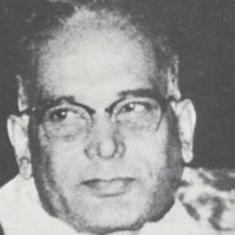During the post-match presentation ceremony of the 2016 Chennai Open, when champion Stan Wawrinka was asked about making a ninth trip down to India in 2017 to play the event, the Swiss declined to reply affirmatively and put forth, “You [fans] should put pressure on [tournament director] Tom [Annear]. I will try to come back here next year.”
The ambivalence of the answer was lost in the moment of euphoria of seeing Wawrinka win his third straight title in the metropolis. A year on, the same ambivalence has been rooted in the firm reality that a player who had played in the sole Indian ATP tournament for eight consecutive years had relinquished his participation for a parallel event held in Brisbane.
As one of the three ATP events leading players into the cut-and-thrust of the new season, the Chennai Open has never failed to attract some solid tennis-playing names in the 22 years it has been around. However, the biggest detracting point from the event’s perpetuity has been that it hasn’t been able to hold continual sway over the players’ attentions, like its two fellow tournaments – in Brisbane and Doha – have been able to. As a result, while the playing fields in these events tend to be stronger, with more top-ranked players featuring in the draw, Chennai’s is relatively leaner, though it’s no-less competitive.
The 2017 editions of the tournaments are then no different, with five of the top-10 ATP players concentrated in Brisbane and three, including Andy Murray and Novak Djokovic, playing in Doha. Marin Cilic, the world No. 6, is the lone player from the rankings’ elite playing in Chennai.
A huge reason for this comparative discrepancy arising is the difference in the prize purse offered by each of the three tournaments, despite all offering a maximum of 250 ranking points.
Doha’s pledging of $1,334,270 is the most of the three tournaments, with the winner receiving a cheque of $209,665. Chennai’s financial contribution is $505,730 with the champion’s earnings coming to $79,780. While Brisbane’s commitment of $495,630 is the lowest of the three, it more than makes up for its glitzy player numbers by way of lucrative appearance fees.
Irrespective of these shortcomings, with their epicentre rooted in on the budgetary front, there’s no doubt about the event continuing, at least for the next three years after receiving a contract extension up to 2019. One reason for this is the heady reception it enjoys from fans across the country. And the other, perhaps the most significant, is the constancy of improvements it has seen in its 20-plus years of existence.
In an interview during the 2016 Chennai Open, Annear talked about the upgrades the tournament has done in order to retain its uniqueness. “We’ve made some conscious improvements,” he said. “The infrastructure, the training facilities and the courts, has improved. The fan experience has been enhanced as well, be it the video screens or the stalls, and other activities that serve up an interactive experience.”
Visible as these betterments are, they are still a far cry from the other tournaments dotting the season. As a result, the Chennai Open has also consistently missed out on being a recipient of the ATP Tour’s annual award for the Tournament of the Year in its category.
The three best tournaments, one from each of the ATP’s current points classification, are voted for by players themselves based on their experiences of having played there. With the ATP constantly looking to modify its scheduling calendar, these awards – especially for the 250 and 500 events – also become a platform for their owners and tournament directors to try and get the events’ statuses elevated as a potential 500 event, or a Masters 1000, roping in more higher-ranked players and generating – and offering – better financial allurements.
In that the Chennai Open finds itself in the midst of a vortex. Not only does it have a lot of ground to cover in terms of becoming one of the absolute ATP mainstays – from the players’ perspective – despite the substantial patronage it enjoys from sponsors and the government, it has also been unable to come to level terms with the parity that can help it meet the necessary objective.
Until the latter is met to the extent required, in spite of its numerous immediate extensions, the Chennai Open’s continuance stands to be disrupted in the long haul. This, then, makes deeper financial adequacy the tournament’s first priority. It was probably also what Wawrinka was hinting at in his post-match speech, almost a year ago, bringing down the curtain on his Chennai Open chapter.










